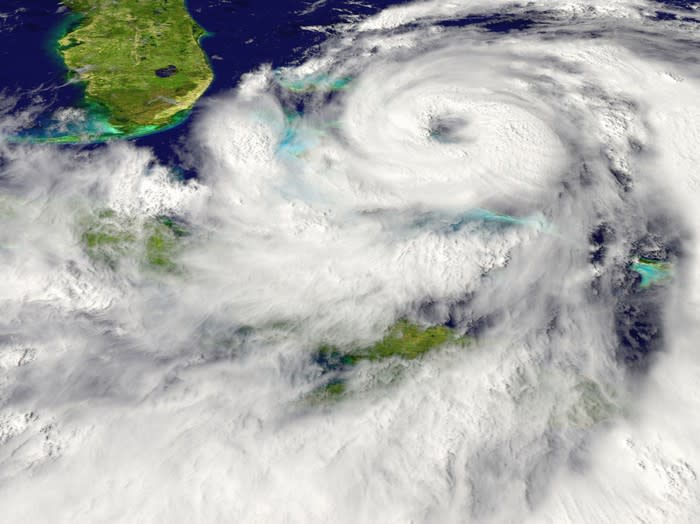3 Events That Could Push Social Security's COLA Higher
We're creeping ever closer to the most important date on most retired workers' calendars: Oct. 10.
On this date, the Bureau of Labor Statistics (BLS) will release inflation data from the month of September, providing the last puzzle piece needed for the Social Security Administration (SSA) to calculate the program's cost-of-living adjustment (COLA) for 2020. Or, to put things in English... Social Security recipients will know how much of a "raise" they're getting next year.

Image source: Getty Images.
Understand, though, that Social Security's COLA isn't a true raise. It was never designed to help seniors, the disabled, and other beneficiaries "get ahead." Rather, COLA is tasked with helping program recipients keep up with the inflation they're facing. This inflation has been measured by the Consumer Price Index for Urban Wage Earners and Clerical Workers (CPI-W) since 1975.
What's particularly interesting about the CPI-W in relation to Social Security's COLA is that the SSA isn't factoring in CPI-W readings over a full-year period. Instead, only readings from the third quarter (July through September) matter, with the average CPI-W reading from the current year being compared to the average CPI-W reading from the previous year. If the average reading rises year over year in the third quarter, then beneficiaries receive a "raise" that's commensurate with the percentage increase (rounded to the nearest 0.1%). Meanwhile, if the average reading declines, which signals deflation, benefits remain static from one year to the next.
Based on the initial data from July's BLS inflation report, Social Security recipients look to be on track for a 1.6% to 1.7% COLA. But, again, this only tells part of the story, with data from August and September still needed to fill out the puzzle.
Social Security's 2020 COLA may be higher than expected
What is possible, though, is that external factors could provide a boost to the COLA that beneficiaries will receive next year. If you're currently receiving a monthly stipend from our nation's most successful social program, here are three events that could push Social Security's COLA higher in 2020.

Image source: Getty Images.
1. Hurricanes
One thing you may have noticed about the three months chosen for the COLA calculation is that they're smack-dab in the middle of hurricane season. Hurricanes themselves are terrible storms that we'd prefer stay out over open water and impact no one. But the fact remains that the Eastern Seaboard and Gulf of Mexico are sometimes bull's-eyes for hurricanes. And when hurricanes hit, it can adversely impact the U.S. energy industry, both onshore and offshore.
In July, when Hurricane Barry made its presence felt in Louisiana and the Gulf of Mexico, 59% of oil production and 49% of natural gas production in the Gulf was shut down ahead of the storm. When energy infrastructure is disrupted because of a hurricane, it tends to raise crude prices, which ultimately sends gasoline prices higher. With energy being one of the numerous components used to calculate the CPI-W, hurricanes have a tendency to lift energy inflation, which can wind up increasing the CPI-W -- and Social Security's COLA.

Image source: Getty Images.
2. An escalating trade war with China
A second event that could have a positive effect on Social Security's COLA is the ongoing trade war between the United States and China. President Trump believes that the U.S. trade deficit with the No. 2 country by GDP in the world is unsustainable over the long run, while President Xi Jinping of China is reluctant to give up many of China's competitive advantages that make it a popular country from which to import. This stalemate has led to both sides imposing tariffs on select goods being imported from their chief rival.
The idea of a tariff is pretty simple: It's designed to coerce consumers to buy domestic goods. In other words, Trump imposing a tariff on Chinese steel or aluminum is meant to coerce American companies to buy U.S. steel or aluminum. But it doesn't always work that way. Businesses and consumers may choose to continue buying the same goods, but they'll be forced to pay a higher price for those goods as a result of the tariffs. This higher price leads to inflation that'll be recognized in the CPI-W and may lead to a higher COLA in 2020.

Image source: Getty Images.
3. A dovish Fed
A third and final event that has the potential to lift Social Security's COLA is Federal Open Market Committee (FOMC) meetings. Compared to hurricanes and the trade war, monetary actions taken by the Federal Reserve often take a while to work their way into the U.S. economy, so this is more of a long shot than the other two events to have a substantive impact on Social Security's 2020 COLA. However, the impact of FOMC actions may not be zero, either.
You see, at the end of July, the Fed lowered interest rates for the first time in more than 10 years after a stretch of increasing the federal funds rates for a period of three years. Lower lending rates have a habit of encouraging businesses and consumers to spend more since the cost to borrow money declines. This increase in spending and consumer demand can have a positive impact on economic growth and business pricing power. And when businesses have more pricing power, it should be reflected in the CPI-W as a higher reading. We've already seen one 25-basis-point cut, and the September meeting could really encourage businesses and consumers to open up their wallets, depending on how dovish the FOMC comes across.

Image source: Getty Images.
Not a lot to cheer about
Of course, no matter what COLA is passed along next year to Social Security beneficiaries, there's probably not going to be a lot to cheer about. That's because the CPI-W isn't a particularly accurate measure of inflation for the group of people Social Security is designed most to protect: seniors.
As the name of the CPI-W suggests, it's an inflationary measure that tracks the spending habits of urban and clerical workers. These are workers who are traditionally not receiving a Social Security benefit and are of working age. In other words, they spend their money very differently than retired workers, which can lead to problems. Namely, important costs to seniors, such as shelter and medical care, tend to be underweighted in the CPI-W, while lesser important expenses, such as apparel and education, have more weighting. The result has been a near-persistent decline in purchasing power for seniors since the turn of the century.
No matter what the 2020 COLA holds in store for retired workers, it's not going to be anywhere near enough to close the gap in purchasing power that's built up over the past two decades. At this point, retired workers have to be hoping that the 2020 COLA simply keeps up with the inflation they've dealt with over the past year.
More From The Motley Fool
The Motley Fool has a disclosure policy.
This article was originally published on Fool.com
